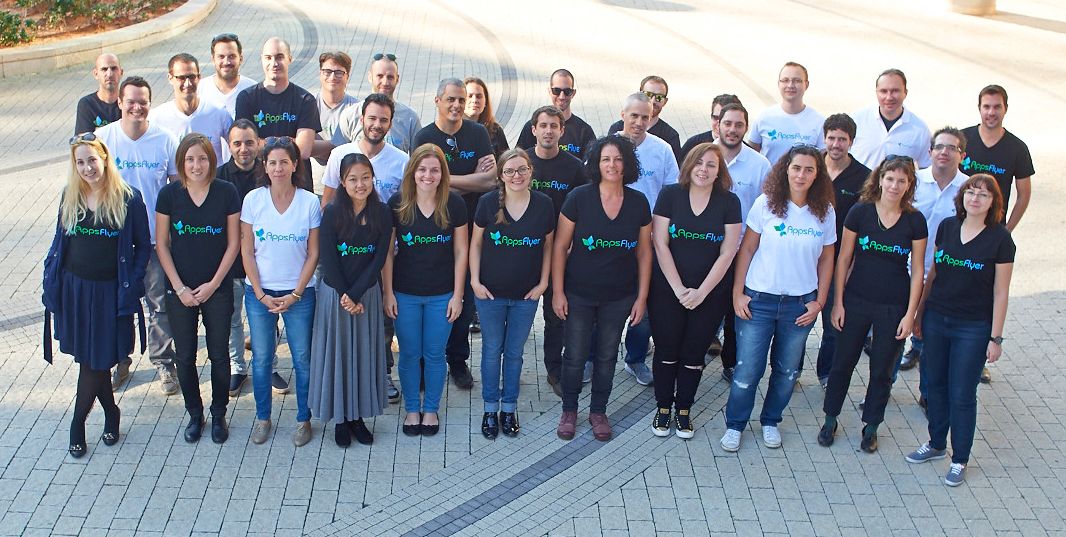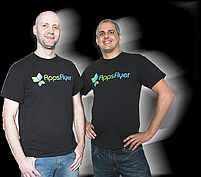The rapid growth of mobile advertising, projected by market research firm eMarketer to hit $64 billion globally this year and reach $158 billion by 2018, has attracted a great number of firms seeking to help advertisers reach mobile users. The array of ad networks, numbering in the hundreds, is daunting enough. Of course, just placing a mobile ad is only the beginning — you need to measure its effectiveness and analyze the results. Trying to do that across dozens or hundreds of ad networks, then adding in the complexities of different ad formats, social media, analytics tools and much more . . . it’s mind-numbingly complicated.
So it’s not surprising that many advertisers remain cautious with mobile advertising. Who wants to spend a lot of money if you’re not able to truly measure the effectiveness of the spend . Enter mobile ad tech firm AppsFlyer, seeking to alleviate this problem by providing a complete suite of software tools enabling advertisers to measure, analyze and optimize mobile advertising across all media sources, including paid, organic, viral and social.
AppsFlyer announced today it has raised $20 million in Series B funding, in a round led by Fidelity Growth Partners Europe (FGPE), with participation from AppsFlyer’s existing investors, Magma Venture Partners and Pitango Venture Capital. With this funding, the company has raised $28 million to date.
AppsFlyer’s NativeTrack technology provides app marketers, brands and agencies with unbiased, independent measurement of campaigns across more than 800 mobile ad networks and media sources. The company has racked up some impressive statistics since its launch in 2011: Its universal software development kit (SDK) has been installed over 4 billion times and can be found in 9 out of every 10 smartphone devices; more than 4,000 advertisers currently use AppsFlyer software to measure and analyze over $1 billion in annual mobile ad spend; and the company tracked more than 2 billion app installations in 2014.

The company’s technology is being adopted by many companies, and it’s working with leading platforms such as Facebook, Twitter and Google as an official Mobile Measurement Partner. AppsFlyer also provides direct integration to many of the leading third-party analytics, automation and delivery providers, including Mixpanel, Swrve, Game Analytics, deltaDNA and many others. In December, AppsFlyer launched OneLink, a unique, all-in-one smart deeplinking solution to help marketers simplify app marketing across all platforms and mediums, including email, web, search, mobile and all other paid media sources.
AppsFlyer plans to invest the funds in R&D to accelerate development of its product offerings, including new tools to help marketers measure the impact of their advertising, marketing and retargeting campaigns. The company will also expand its international growth by opening new offices throughout the world to complement existing offices in San Francisco, Tel Aviv and Beijing. Additionally, the company will invest in its knowledge center to provide key insights and education that help the industry understand the rapidly evolving mobile advertising landscape.
“Our mission is to empower advertisers with unbiased information and to give them the marketing toolbox they need to conduct smarter, more effective mobile marketing,” said Oren Kaniel, AppsFlyer CEO and co-founder. “We are thrilled with this investment from Fidelity because it will allow us to maintain our platform neutrality and to further develop the mobile advertising SaaS platform the industry is waiting for.”
 Oren Kaniel and Reshef Mann
Oren Kaniel and Reshef MannThe [a]listdaily spoke exclusively with Kaniel about the company’s ad technology and the future of mobile advertising.
The complexity of ad and marketing tech, and the number of ad networks out there, continues to grow. How does AppsFlyer help marketers cope with this increasingly complex market?
Simplifying the complexity is our mission. The AppsFlyer universal SDK supports 800 different ad-networks; additional ad-networks and functionalities are added without the need to update our SDK. Everything is available to our clients automatically from our dashboard. The AppsFlyer SDK also support retargeting with all the ad-networks that supports that without the need to add more SDK’s and in-app events/pixels. Users segmentation and targeting is set once, and can be streamed to Facebook, Twitter, Google and others for retargeting. AppsFlyer’s OneLink, smart deeplinking solution simplifies marketers work across any device, any platform and any scenario whether the required app is installed or not.
How hard is it for marketers to get up and running with AppsFlyer? How well does it integrate with existing technologies that they may already be using?
It is super simple. They need to drop our SDK and few lines of code. We also offer a great way to integrate with other 3rd party in-app analytics providers such as Mixpanel directly from our dashboard.
How well does AppsFlyer work for game publishers, and does it help track not just installs but longer term engagement and monetization of games, as well as cross-promotion of game titles?
AppsFlyer tracks installs and every user action that follows these installs, such as, engagement, in-app purchases etc. In addition, we offer retention and cohort reports. AppsFlyer’s NativeTrack can track any type of media sources: Paid, social, cross promo and user referrals. The OneLink solution is leveraged for user referral programs by utilizing the attribution capabilities.
Where do you see the mobile ad market growing the fastest, both geographically and in terms of brand types ? (consumer products, retail, services, games, etc.)
We see a hyper growth all around. We expect to see faster growth for apps that generates some kind of return/revenue. By leveraging the AppsFlyer’s measurement tools, marketers can identify their profitable campaigns and increase their budgets indefinitely.
What types of mobile ads are performing best these days, and what changes do you see ahead in mobile ad types? Will we see more video, interstitials, banners, other types of mobile ads?
Ad type is usually a sales pitch. In the end of the day, marketers are looking for ROI. Better ROI is usually achieved by better targeting. We expect ad-networks to improve their targeting and overall performance. We expect to see more CPA campaigns where the marketers are paying only for valuable actions.

